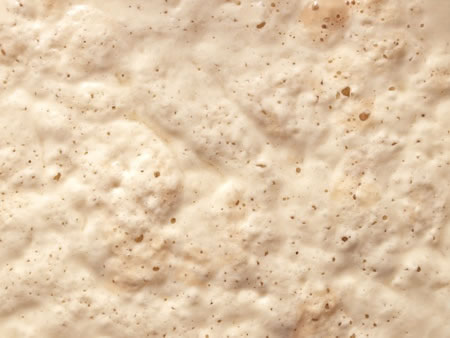
Comparison of Dough Systems
How do you compare dough systems?
Comparing dough systems allows bakers to identify and analyze different aspects of systems. This information helps in identifying the best production process for commercial breadmaking operations. Important aspects that plant managers need to consider are:
- Plant economics
- Production flexibility
- Dough system
- Batch time
- Cleaning
How does it work?
Doughs systems are employed in the wholesale production of yeast-leavened bakery products such as white pan bread, whole wheat bread, hamburger and hot dog buns. They usually involve initial stages of the breadmaking process (mixing and fermentation) as well as amount of ingredient scaled and downstream stages including makeup and final proofing.1
Typical dough systems include:2,3
- Sponge and dough (S&D)
- Straight dough
- No-time dough
- Liquid preferment (water and flour brew)
- Continuous mixing
Application
Given its well-known benefits in terms of finished product quality and its adaptation from retail artisan bakeries to high-speed baking plants, the sponge and dough system (S&D) has become the comparison base or “standard” for other systems.
Using white pan bread formulation, following are critical operational and financial considerations:3,4,5
Sponge and dough |
Straight dough bulk fermentation |
No-time dough |
Flour brew (liquid sponge) |
Water brew (broth) |
|
| Mixing time | 8–11 min (shorter as flour ratio increases) | 14–18 min (shorter if salt/sugar are delayed) | 14–18 min (shorter if salt/sugar are delayed) | 10–14 min (shorter as flour ratio increases) | 14–18 min (shorter in high-intensity developer) |
| Fermentation time | 4–5 hours (sponge) | 1–3 hours (dough) | 0–20 min (floor time for resting) | 2–2.5 hours (longer as flour ratio increases) | 40–60 min |
| Total batch time including makeup, baking, cooling) | 7–8 hours | 5–6 hours | 3.5 hours | 5–6 hours | 4–5 hours |
| Tolerance to schedule changes or line disruptions | Good given long ferment time of sponge | Good given Intermediate bulk fermentation time | Poor as fermented dough must be processed immediately |
Excellent given presence of holding tank in line | Excellent given presence of holding tank in line |
| Flexibility (making of other baked goods) | Excellent | Good | Poor | Good (the more flexible as flour ratio increases) | Poor |
| Cleaning and sanitation of mixer and fermentation equipment | Cleaning-out-of-place (COP), Manual cleaning | COP, Manual cleaning | COP, Manual cleaning | CIP | CIP |
| Use of dough conditioners | Low | Intermediate | High | Intermediate (decreases as flour ratio increases) | High |
| Control of process (T°, pH and TTA) | Off-line (manual) | Off-line (manual) | Off-line (manual) | In-line instrumentation and manual | In-line instrumentation and manual |
| Initial capital investment (equipment) | Intermediate | Low | Medium given some processes use specialized high-speed mixer | High | High |
| Floor space requirements | Intermediate (Increased need for equipment and space to ferment sponges) |
Intermediate (Increased need for equipment and space to ferment doughs) |
Low (fermentation equipment) | High | High |
| Labor cost | High | Intermediate | Intermediate | Low (mechanized and automated line) | Low (mechanized and automated line) |
| Ingredient cost | Low | Intermediate | High (greater use of dough conditioners, yeast, sugar) | Intermediate (decreases as flour ratio increases) | High (greater use of dough conditioners, yeast, sugar) |
Typical characteristics of baked white bread (internal and external):3,4,5
Sponge and dough |
Straight dough bulk fermentation |
No-time dough |
Flour brew (liquid sponge) |
Water brew (broth) |
|
| Crumb grain | Slightly open, some non uniform areas | Less open | Dense and tight grain, uniform | Tight (small cell structure) and more uniform | Tight and uniform |
| Taste and aroma | Good/unique fermentation flavor and aroma (acidic and fruity notes) |
Good fermentation flavor and less strong aroma | Mild flavor and weak aroma | Good fermentation flavor and aroma in high flour ferments |
Weak flavor and lack of fermentation aroma |
| Texture (softness) | Silk, smooth texture, moist pleasant mouthfeel | Good mouthfeel | Good mouthfeel (use of dough conditioners) | Good mouthfeel (use of dough conditioners) | Fair mouthfeel (use of dough conditioners) |
| Volume, break and shred | Standard as template | Equivalent to S&D in shorter time (use of dough conditioners) | Equivalent to S&D in shorter time (use of dough conditioners) | Equivalent to S&D in shorter time (use of dough conditioners) | Equivalent to S&D in shorter time (use of dough conditioners) |
References
- Moore, T.R. “Breads.” Encyclopedia of Food Grains, 2nd edition, volume 3, Academic Press, Elsevier Ltd., 2016, pp. 8–17.
- Sievert, D., Hoseney, R.C., and Delcour, J.A. “Bread and Other Baked Products.” Ullmann’s Food and Feed, Volume 2, Wiley-VCH Verlag GmbH & Co., 2017, pp. 462–508.
- Cauvain, S.P. “Bread: Breadmaking Processes.” Encyclopedia of Food and Health, volume 1, Academic Press, Elsevier Ltd., 2016, pp. 478–483.
- Cauvain, S.P. “Breadmaking: An Overview.” Breadmaking: Improving Quality, 2nd edition, Woodhead Publishing Limited, 2012, pp. 9–28.1.
- Carson, L. Dough Systems. A Guide On Formulating Sponge and Dough, Preferments and Straight Dough Systems, BAKERpedia, LLC, 2017.

